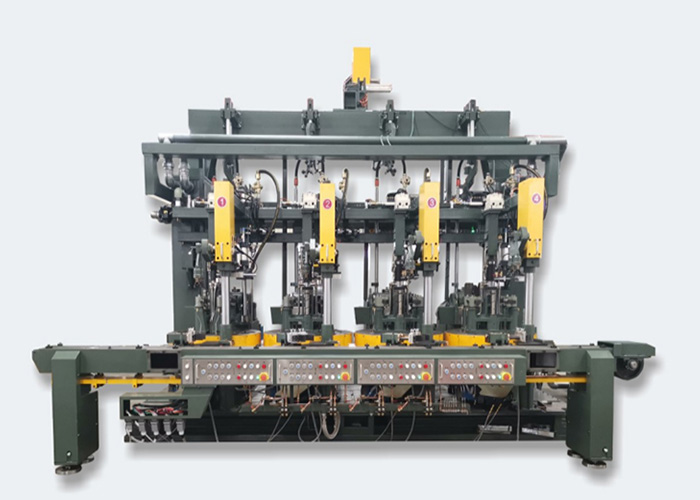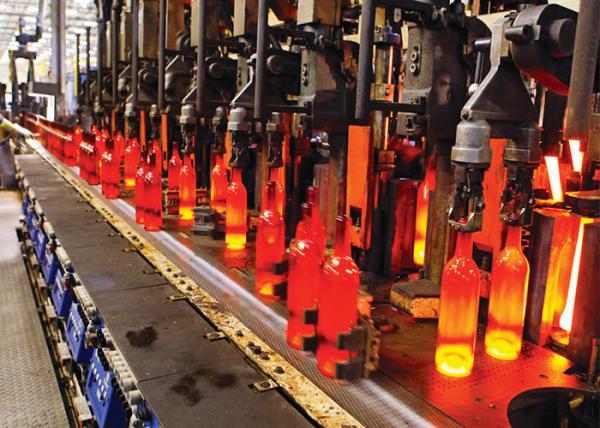Wine Bottle Glass, Glass Bottle Production line, Green Bottle
1. Brief introduction
A glass bottle is a rigid container made from glass that is
typically used to hold liquids, such as beverages, pharmaceuticals,
and personal care products. With a good chemical stability and
excellent artistry, the glass bottle has become one of the most
popular packing materials. which has occupied an important position
in the market that cannot be ignored.
Due to its non-reactive nature, glass is an ideal packaging
material that preserves product integrity, extends shelf life, and
is 100% recyclable, making it an environmentally friendly option.
2. Types of container glass classification
| Item | Description |
| 1 | Container / Bottle |
| 2 | Container with handle |
| 3 | Tubular container |
| 4 | Volume: 1ml~25000ml |
| Item | Description |
| 1 | Roundness (majority) |
| 2 | Oval |
| 3 | Square |
| 4 | Rectangle |
| 5 | Flat |
- Sort by diameter of bottle neck:
| Item | Description |
| 1 | Wide-mounth bottle or jar |
| 2 | The inner diameter of the bottle is over 30mm, with small or no
shoulder, which is usually used for semifluid and powder or bulk
solid goods. |
| 3 | |
| 4 | |
- Sort by bottle mouth and caps:
The diameter and tolerance of bottle mouth is a standard one. The
bottle mouth can be divided into screw, cork, pouring, crown cap,
roll-on cap, plastic cap, spray mouth, press type mouth, prize up
mouth, glass stopper frosted mouth, mouth with handle and tubular
type mouth, etc.
- Sort by requirement of use:
| Item | Description |
| Single use bottle | Used once and discard it. |
| Recycle bottle | These products can be recycled and reused many times |
| Item | Description |
| Form by mould | The glass liquid will be form a certain type of bottles via mould |
| Form by tubular method | The glass liquid will be stretched into a glass tube and
re-manufactured to a required bottle. |
| Item | Description |
| Flint / Clear | Most of the glass containers are flint, which will keep stores more
visually. |
| Green | Usually, the green bottle is used for drinks and beers. |
| Brown / Amber | Normally, the brown bottle is for pharmaceuticals or beers, this
kind of color can absorb ultraviolet rays, which will help to
protect the stores. |
| Opal | This kind of bottle is for cosmetics, vanishing cream, unguent and
liquor. |
3. Physicochemical changes in each glass melting stage:
In this stage, the components of batched materials will produce a
physicochemical solid phase reaction during heating process, in
which the gaseous products will be released from the batched
materials and produce a new opacity sinter ultimately, which is
formed by silicate and SiO2.
In this stage, the sinter will be melting and the silicate and SiO2
in sinter will change to flint glass liquid with a plenty of
bubbles. However, its chemical components and character are not
even.
The glass liquid is continuously heated, and its viscosity is
reduced with plenty of gaseous sundries released, which should
eliminate the visible bubbles with the pool of liquid.
The glass liquid is kept at high temperature for a long time, the
ripple eliminates by diffused function and homogenizes as a whole.
The temperature of homogenization can be lower than the clearing
stage.
Glass melting is a very complex process, it includes physical,
chemical and physicochemical phenomena and reaction. These
phenomena and reaction lead the mechanical mixed raw materials to
complex melting glass liquid.
It is the part which melts batched materials and clearing and
homogenizes glass liquid. In the upper space of the melting section
is referred to as the flame space, the lower part is melting tank.
The flame comes from the burner through the port, which feds in
preheated air to increase the flame effiency.
4. Main equipment of glass forming
- Gob Feeder / Serve Gob Feeder
- I.S. machine
- Press machine
- Blowing machine
- Stacker
- Transfer ware
- Conveyor
- Annealing lehr
- Packing devices


